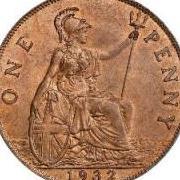|
|
The current range of books. Click the image above to see them on Amazon (printed and Kindle format). More info on coinpublications.com |
|
|
-
Content Count
1,722 -
Joined
-
Last visited
-
Days Won
105
Paddy last won the day on April 13
Paddy had the most liked content!
Community Reputation
1,543 ExcellentAbout Paddy
- Currently Viewing Forums Index
-
Rank
---

- Birthday 09/09/1958
Profile Information
-
Gender
Male
-
Location
Devon, England
-
Interests
British Pre-decimal Milled and Hammered coinage. Some decimal and foreigh coins.
Recent Profile Visitors
-
No response here, and the item is still listed unaltered.
-

1825 Shilling - how to spot a Barton Metal/Gilded variety
Paddy replied to Paddy's topic in British Coin Related Discussions & Enquiries
That's great - thanks. So definitely not a Barton. And I assume it can't be a gold proof, so we are back to the original attribution - a gilded silver 1825 shilling. -

1825 Shilling - how to spot a Barton Metal/Gilded variety
Paddy replied to Paddy's topic in British Coin Related Discussions & Enquiries
And here is a view of the edge: -
Paddy started following Astonishing colonial attitude, 1825 Shilling - how to spot a Barton Metal/Gilded variety, Geoffrey Cope collection and and 4 others
-
I have had this 1825 shilling in my collection for years and I always assumed it was just someone's attempt to pass off as a Sovereign by gold plating it. However, I was looking in ESC this morning and spotted that there was a gold coloured variety produced in "Barton metal" - copper between thin layers of gold. I got to wondering if this might explain my gilded shilling. The weight is the same as the silver shilling (5.62g). ESC mentions that the copper is sometimes visible on the edge - I cannot see any evidence of that. Is there any other way of distinguishing them? Here is the specimen:
-

Geoffrey Cope collection
Paddy replied to Coppers's topic in British Coin Related Discussions & Enquiries
I dread to think! I was lucky if I could get 50p for one, so I guess Coincraft probably want £20+ ? -
This from the BBC reveals a study into the origin of the silver used in some Saxon coinage - much coming from Byzantine ingots, but some from Melle in Western France. https://www.bbc.co.uk/news/uk-england-cambridgeshire-68722153 I was intrigued by the "HAROLUS IMP AUG" coin included in their images. Anyone know the history of this design?
-

1897 Penny - NGC calls these two High Tide, seems incorrect
Paddy replied to SilverAge3's topic in British Coin Related Discussions & Enquiries
There is a good example on this page - right at the bottom: https://headsntails14.wordpress.com/victoria-bronze-reverses/ -
I thought this article might be of interest. They look in pretty decent condition for a hoard. I see a couple of Irish examples on the top. https://www.bbc.co.uk/news/uk-england-norfolk-68685683
-
Welcome to the forum @SteveW. It sounds as if you have an interesting collection already. I am sure we would like to see your sixpence and the 1860 farthing - both sound interesting. Cleaning is always a hot topic here. Alcohol is good for cleaning off sticky tape and seems to do no other damage. Getting rid of unsightly tarnish is much more difficult. Ammonia will do it, but leaves the coin looking pale and flat. Left too long it will result in pitting and serious damage. In the US there is a product designed for clearing Verdigris - I think called Verdicare. It is not available here in the UK I think, so I have never tried it and can't vouch for it, but it might be worth trying it out on one of your "also ran" farthings first. The penny collectors on this forum are probably the most serious and experienced in the world. The other UK coppers/bronzes are also well supported, so you should get plenty of help.
-

Astonishing colonial attitude
Paddy replied to blakeyboy's topic in Nothing whatsoever to do with coins area!
I was unfortunate enough to meet up with a group of Russians on holiday in Turkey ten or more years ago. Their attitude was very high-handed and patronising to everyone else. They were quite certain that they were the superior race and it was their destiny and right to rule the world - much as the British had 100 years ago. Hence it was no surprise when they set about increasing their empire by invading Ukraine, and if they are allowed to win there, I fear they will be straight on to the next target - probably the Baltic States. -

Anyone know the Lumix DMC-GF2 camera?
Paddy replied to blakeyboy's topic in Nothing whatsoever to do with coins area!
I was going purely on a google search for "Lumix lens mounts" which indicated "L-mount" as the answer. I am sure a more thorough search would clarify. (I was on my way out to Bridge night, so I did not have much time to research!) -

Anyone know the Lumix DMC-GF2 camera?
Paddy replied to blakeyboy's topic in Nothing whatsoever to do with coins area!
No - it fits between the lens mount and the camera body, so you would have to find a set with Lumix fittings. I found mine on Amazon I think (may have been Ebay). You usually get a set of three, to give three different levels of Macro. I find the smallest tube allows me to focus on up to Crown size coins at about 15cm range so that they fill the picture size. The longer tubes allow still closer for very small coins. I think this one would do: https://www.amazon.co.uk/VILTROX-Extension-Adapter-Support-Compatible/dp/B0BLZ4W5SJ/ref=sr_1_6?crid=JAHMH6APNIEO&dib=eyJ2IjoiMSJ9.Nr151YSAC3VS9eZYbyFbpSjU8ODJZW0UEWA3qA41oE70kP2EP0_atU9SDqeflRXn3TeRk_YrrqojWuE6vJE-Gu_5lWHrhIkm8Qg9QgurGGwsQuQ_LENNGD8_BCsyTsiBvzkSW2W3EpAVwBZ8yjNg9R90sBMz7JaUGdqjO0xTmQOOkN4_WxbjCtQLL5V-MmbV31YUPChUgPZScAwLdyMRLmj9RZfsEjAQUKy_pDunfwc.pFii9qcG1TqtTS5pDMxgjEZPrdbcSIy5S2F-hNMmXaw&dib_tag=se&keywords=Lumix+extension+tube&qid=1709836660&sprefix=lumix+extension+tube%2Caps%2C145&sr=8-6 but that is for autofocus. You may find cheaper without that feature. Lumix uses "L-Mount". -

Anyone know the Lumix DMC-GF2 camera?
Paddy replied to blakeyboy's topic in Nothing whatsoever to do with coins area!
I don't know the Lumix at all, but the alternative to an expensive macro lens might be extension tubes? I use them with my Pentax and a standard 50mm lens to take macro style shots. It is a bit more fiddly, but I leave the set up for coins only so rarely need to alter anything. -
Neither my 1892 or 1894 show any sign of the missing bar. Interesting the double inner circle - I hadn't noticed that before. As I suggested, I am blind to variations until someone rubs my nose in it!
 Coinpublications.com
Coinpublications.com






